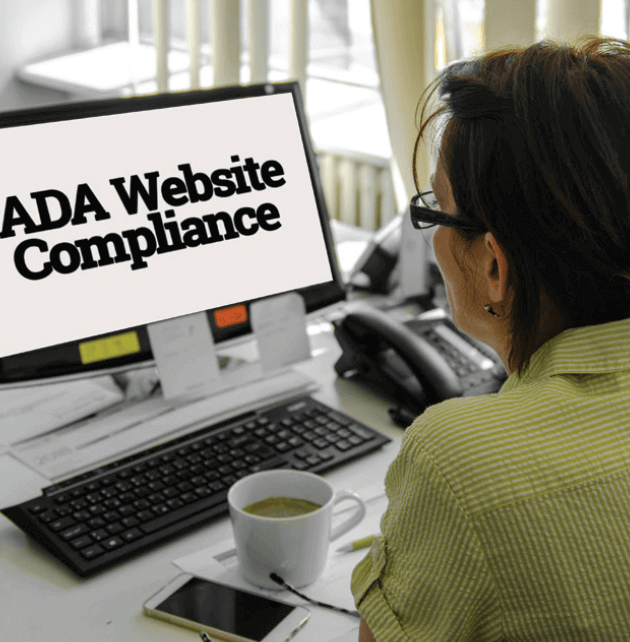It’s important that you are aware of the latest “class action” lawsuits facing business owners: not having an ADA compliant website.
The Americans with Disabilities Act (ADA) was instituted in 1990 in an effort to end discrimination based on differing abilities. Drawing heavily from the landmark Civil Rights Act of 1964 – which established protections against discrimination based on race, religion, sex or national origin – the ADA went a step further by requiring organizations to provide “ reasonable accommodations” to employees with disabilities. This was a fairly revolutionary addition that led to the widespread adoption of wheelchair access ramps, accessible restroom facilities, and many other equal-access accommodations that have become a regular part of most American workplaces.
Title III of the ADA requires that every owner, lessor, or operator of a “place of public accommodation” provide equal access to users who meet ADA standards for a disability. With roughly 1.6 billion people around the world making online purchases in 2017, one might reasonably presume that this concept extends to a company or business website, but from a legal standpoint, there is a surprising amount of gray area. Various courts across the United States have ruled that commercial websites are places of public accommodation and thus are subject to ADA rules. Other cases have concluded that websites are bound by ADA regulations if there is a close “nexus” between the site and a physical location. Even further, other courts have decided that the ADA laws as written do not offer any protections for online users. With no overarching federal rules in place, it’s very difficult to make a definitive statement about whether or not any given website is governed by ADA accessibility rules.
Over the past couple of years, attorneys have been scouring web sites to find ones which, in their minds, are not ADA compliant. Usually they look for those sites where people who are protected against vision and hearing disabilities would have trouble using a website. Then they solicit a group of people who might be negatively affected if they tried to use the site and bring them together in a class-action lawsuit against the business. But here are the problems:
PROBLEM #1: The ADA does not provide specific guidelines for websites.
PROBLEM #2: In some cases, insurance coverage exists. Unfortunately, most of the demands are intentionally below your deductible.
Butwin strongly recommends that you contact the team responsible for your website immediately and determine your site’s vulnerability to ADA accessibility. Your web team is likely aware of the Web Content Accessibility Guidelines (WCAG) 2.0 which can be used to determine compliance with the guidelines.
WCAG is not law. Rather it is a set of recommended actions that companies should seek to address to create an easier, more enjoyable, “equally accessible web experience” for those with disabilities – especially the visually and hearing impaired.
Three Levels of Compliance
WCAG guidelines break accessibility issues down into three levels:
Level A – These are typically the most urgent issues – those that can severely limit a disabled visitor’s ability to navigate or use the website
Level AA – More functionality based, addressing improvements needed to give disabled users the full experience of a site. These have become the target guidelines for most websites.
Level AAA – The highest standard, fine-tuning and expanding on issues identified in Level A and AA. Compliance at this level is likely not attainable by most websites.
Four Areas of Focus
Under the WCAG, accessibility issues are categorized into four distinct groups:
- Perceivable … issues affecting a user’s ability to find and process information on a website (for example, providing audio descriptions for video content).
- Operable … issues that impact a visitor’s ability to navigate and use a website (for example, ensuring that all site functions and navigation can be operated via keyboard-only commands).
- Understandable … a user’s ability to discern and comprehend all information and navigation on a website (for example, composing error messages that include a clear explanation of the error and direction for correcting it).
- Robust … a website’s ability to adapt and evolve to meet the changing needs of users with disabilities (for instance, testing compatibility with all leading screen readers and ensuring that those capabilities can be upgraded in the future).
While the issue of online accessibility is likely to remain in the gray area for some time, equal access is a major concern for website users across the United States, and for the courts that are designed to protect all users. Abiding by WCAG accessibility guidelines remains the best strategy for most organizations. It is a giant step forward to ensuring the best website experience – and accessible solutions – for people both with and without disabilities.

 Agency Billed
Agency Billed
